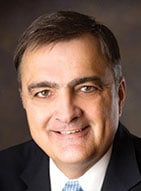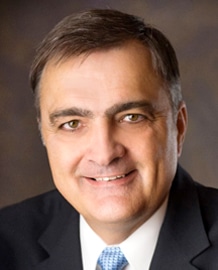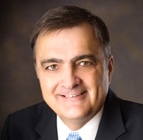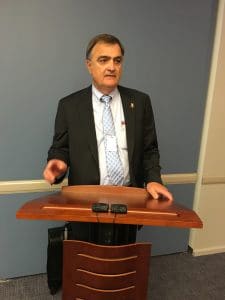SMART Transportation Division National Legislative Director John Risch, pictured, along with Bob Perciasepe, president of the Center for Climate and Energy Solutions, and D. Michael Langford, national president of the Utility Workers Union of America, in an op-ed piece published Nov. 29 on thehill.com remind leaders in Congress not to overlook the job-creation potential of carbon-capture technology.
Follow this link to read the full column: thehill.com/opinion/energy-environment/362411-congress-heres-a-co2-smart-tax-fix-to-protect-create-jobs
Tag: John Risch
After derailments, blocked crossings and other complications, two members of the U.S. House of Representatives’ Committee on Transportation and Infrastructure have asked for the federal Government Accountability Office to study the effects of longer freight trains.
In the letter dated Nov. 7, ranking members Peter DeFazio, D-Ore., and Michael E. Capuano, D-Mass., made the request after referencing the derailment Aug. 2 of a CSX train in Hyndman, Pa.
The derailment of 32 cars from the train that consisted of five locomotives and 178 rail cars caused the evacuation of about 1,000 town residents and destroyed a house. The representatives noted in their letter that the average freight train consists of about 70 cars.
“Recent press reports indicate that some railroads are now operating trains with close to 200 or more cars that are more than two miles long,” they wrote. “We have concerns that longer trains can create unusually long delays at grade crossings and may pose safety risks to train crews and the public.”
DeFazio, a ranking member on the House Transportation and Infrastructure Committee, and Capuano, a ranking member on the Railroad Subcommittee, also mentioned operational challenges for rail workers, such as possible loss of radio contact, or service delays as a direct result of the longer trains.
“We appreciate that these congressional leaders have asked for a review of these dangerously long trains.” SMART-TD President John Previsich. “This issue was also addressed by John Risch, our national legislative director, at a recent STB hearing.”
Risch appeared Oct. 11 in Washington D.C. before the Surface Transportation Board at a listening session focused on problems with CSX’s service.
“Urging CSX to do better will not fix the problems that excessively long trains cause,” Risch said during his testimony. See a full article and video of that testimony here.
DeFazio and Capuano’s letter asks the GAO to look into various aspects of longer trains from the perspective of rail worker and public safety and also to examine the levels of oversight available on the federal, state and local levels to remedy safety concerns posed by longer trains.
To read the letter, follow this link.
These comments are on behalf of the Transportation Division of the International Association of Sheet Metal, Air, Rail and Transportation Workers (SMART). The SMART Transportation Division, formerly the United Transportation Union, is an organization representing approximately 125,000 transportation employees with active rail members in all operating crafts, including engineers, conductors, trainmen, switchmen and yardmasters.
This is in response to the PHMSA’s request for additional information regarding its current regulations on Electronically Controlled Pneumatic (ECP) braking systems.
As a locomotive train engineer for 30 years who has operated trains with ECP brakes, I can attest that ECP brakes are the greatest safety advancement I have seen in my 40 years in the railroad industry. ECP brakes slow and stop trains up to 70 percent faster than conventional brakes and are the safest, most-advanced train braking system in the world.
The most recent analysis of ECP braking systems has focused almost exclusively on comparing ECP brakes with conventional braking systems during emergency brake applications. The analysis also evaluated conventional brakes with distributed power, which is a small aid to conventional brake systems. I readily admit that ECP brakes are only slightly better than conventional brake systems during emergency brake applications. But reviewing ECP brakes only as they apply to emergency applications is a mistake because emergency brake applications on freight trains are a rare event. PHMSA needs to consider other very significant safety benefits that ECP brakes provide in the safe movement of trains.
The most recent ECP review was unnecessary and was a response by Congress to demands from the nation’s railroads to repeal the rule. ECP brakes have been studied and analyzed for years, and the jury is in — if we truly want to take rail safety to a higher level, ECP brakes are the means by which to do so.
The latest study focused on one aspect of ECP brakes because in emergency applications ECP brakes are only slightly better than conventional brakes and would not justify the entire costs of their installation. The real failure will be if PHMSA does not look at comprehensive analyses of ECP brakes that have already been done on freight train operations. This can be corrected by reviewing past studies, including FRA’s final report titled ECP Brake System for Freight Service that was produced by Booz Allen Hamilton and released in August 2006.
Conventional train air brake systems are a 140-year-old technology that has evolved to its maximum capabilities. You can add dynamic braking, which has been around since the 1930s, and you can add distributive power, which has been around since the 1990s, to conventional air brakes, and you gain slightly in improved braking. But the only dramatic advancement to improve a freight train’s braking ability and safety is from ECP brakes. As a locomotive engineer, operating a train with ECP brakes is like driving the new top-of-the-line Tesla while operating a freight train with outdated conventional brakes is like driving a 1974 Ford Galaxie 500. The differences are that significant and substantial.
Below are 11 key reasons why ECP brakes are better than conventional air brakes:
- ECP brakes maintain a train’s brake pipe pressure 100 percent of the time, conventional brakes do not.The colder the weather, the thinner the air, the more crucial maintaining brake pressure is.
- ECP brakes allow for a “graduated” release. An engineer can partially release the train’s brakes without having to fully release them. This is vitally important because once a train’s brakes are released, it takes time to recharge the train’s brake pipe pressure in order for the brakes to work again. The graduated release feature allows an engineer to maintain the speed of his/her train down steep grades with a partial application of the brakes and without fully releasing and reapplying the train’s brakes repeatedly.The graduated release feature all but eliminates the possibility of a runaway train.
- When the engineer makes an emergency application of the brakes, every car with ECP brakes applies its brakes 100 percent of the time.This is not always true with conventional brakes.
- ECP brakes would have prevented the terrible Lac-Megantic oil train tragedy that killed 47 people and destroyed the town, a factor cited in Transport Canada’s report on the accident.These brakes would have prevented the accident because when air pressure on a car equipped with ECP brakes drops below 50 psi, the car automatically goes into emergency. Therefore, even an improperly secured train will not roll away.
- ECP brakes allow the crew to monitor every car in the train in real timeto determine if the brakes are applied or released. Conventional brakes do not.
- ECP brakes record retrievable data associated with brake failures.There is no such review for conventional brakes. Trains are inspected every 1,000-1,800 miles, and if the brakes are working during the inspection, the car moves on. If a car has brakes that fail to apply during that inspection, the car is taken to a repair facility. Often, that facility is a heated shop where the car warms up. The brakes are then tested, and if they work at that point, the car is not repaired and instead placed back in the train.
- ECP brakes all but eliminate in-train forces because all the cars apply and release at once.Conventional brakes create a multitude of in-train forces, some of which damage couplers, knuckles, draft rigging and merchandise. These in-train forces also cause break-in-twos and derailments.
- ECP brakes cause all cars to brake evenly, which dramatically reduces damage to wheels and brake shoes, saving a great deal of money in maintenance and repair.Conventional brakes do not. The modest cost of installing ECP brakes, approximately $3,000 per car on a new DOT 117 tank car that costs $144,000 to build, and about $60,000 per locomotive, will be more than paid for in the savings in car repairs, let alone reduced train derailments.
- ECP brakes can be modified to apply hand brakes to a railcar automatically from the locomotive, allowing the crew to apply a hand brake on every car in the train in seconds.Conventional brakes must be applied by hand, and it can take an hour or more to properly secure a train.
- ECP brakes are required by the American Association of Railroads (AAR) for the movement of nuclear waste trains because they are the safest braking system available.
- ECP brakes can be modified and will evolve to do everything sophisticated wayside train detectors do nowand will do it in real time, eventually eliminating the need for wayside detectors.
For the safety of rail workers and the residents in surrounding cities and towns that trains run through, it is vital that ECP brakes be phased in on freight trains. We ask that PHMSA retain the final rule so we can gradually and cost effectively evolve our antiquated, outdated freight train braking systems into the best they can be.
In addition, we request that PHMSA hold a public hearing where I can explain in detail the benefits of ECP brakes and answer any questions the agency might have.
Thank you for the opportunity to comment.
John Risch
National Legislative Director
SMART- Transportation Division
In comments to the Federal Railroad Administration (FRA), SMART TD’s National Legislative Director John Risch wrote in support of allowing train crews to sound train horns at their discretion when traveling through rural America.
The comments were written in response to the Strasburg Railroad Company’s (SRC) request that their train crews be allowed to sound horns at their discretion due to livestock often grazing on farmsteads bordering tracks in Amish country.
“SRC’s request is not only reasonable, this is the way train crew members have conducted themselves for the past 140 years prior to the enactment of mandatory whistle rules,” Risch wrote. “This isn’t just an issue for Amish country – it’s an issue for all of rural America where farmers oftentimes herd livestock near a crossing and where people ride horses near the railroad track. Our nation’s operating crews should all be allowed the discretion in sounding or not sounding a locomotive horn when these situations arise.”
Risch went further in his letter to not only support SRC’s request but to also request that the FRA extend the waiver request to all railroads with the caveat that carriers be prohibited from disciplining crews from using their discretion.
Click here to read the full letter.
The Bismarck Tribune reports that the completion of the Dakota Access Pipeline may possibly reduce rail crude transport by 470,000 barrels or more. SMART TD National Legislative Director John Risch told the newspaper that the downturn in oil shipments by rail could negatively impact BNSF’s ability to continue to invest in rail services.
Click here to read more from the Bismarck Tribune.
Proposed rule: “Competitive Passenger Rail Service Pilot Program”

SMART TD, TTD and all of rail labor opposed this concept and other privatization mandates as the bill was going through the legislative process and fought to remove it or include conditions that would protect workers and create a level playing field if it ever went into effect. In the end, while the pilot provision stayed in the final bill, a number of conditions were attached to it at our request and it was limited to three long-distance routes. Given the political realities we face on the Hill and the opposition to Amtrak that exists, this was not an easy task.
TTD submits comments on proposed rule
Yesterday, September 6, the Transportation Trades Department (TTD) of the AFL-CIO commented on the proposed rule published by the FRA. Click here to read TTD’s comments.
National Legislative Director John Risch on TTD’s comments:
“The comments filed by TTD urge FRA to ensure that labor, service and Buy America rules that attach to this program are fully implemented. Specifically, TTD’s comments call on FRA to ensure that so-called 4R rail employee protections cover workers impacted by this program. As TTD notes in their comments, we think the law requires this result, but we need to make sure the FRA implements this in the right way. I should note that Rich Edelman, on behalf of the BMWE (which was not included in TTD’s comments since they are not members) also filed comments. Edelman, who has a strong background in this area of the law, goes into more detail on the legal background on the protections which should be helpful. It is important to note that both TTD and Edelman’s comments are on the same page. (Click here to read Edelman’s comments.) They demand 4R act protections and our comments have a whole section that talks about why they are legally needed to be applied and specifically ask that the proposed regulations be amended to require any winning bidder be responsible for those protections. We also are asking FRA to issue guidance to adopt them to this situation.
“TTD’s comments also urge FRA to adopt hiring preferences and procedures for Amtrak employees and to ensure that any new entity is covered by rail laws just like Amtrak is today.
“We all need to keep this in perspective. Amtrak receives preferential pricing from the Class 1’s to operate over their track, something the Class 1’s have for years decried as inadequate. A new entrant will not likely receive nearly as good an operating rate as Amtrak currently does. If there is a winning competitive bidder on any of these three routes they will only receive 90 percent of the funding that Amtrak currently receives to provide the service making the bidding process even harder.”
SMART TD Testifies before FRA
Today, September 7, the FRA held a public hearing on the proposed rule. SMART Transportation Division National Legislative Director John Risch was at the hearing and testified on behalf of SMART TD. Click here to read his comments.

Standing with the FRA, and this rule, are railroad employees, their unions and the public.
SMART TD National Legislative Director John Risch told the Columbus Dispatch, “Today, the only safe way to run a train is with two crew members. I would quit my job before I went out there by myself.”
Click here to read more from the Columbus Dispatch.




